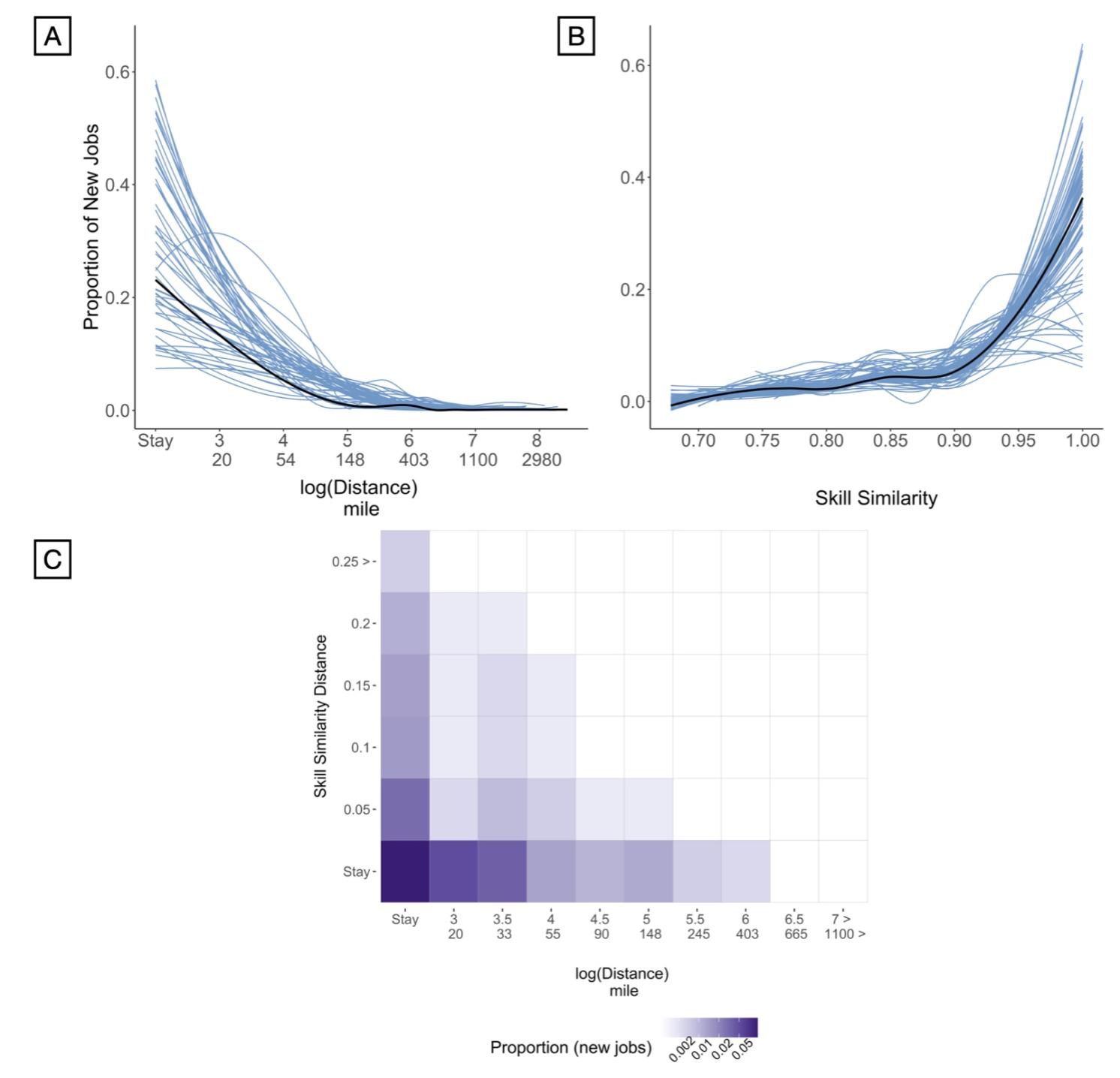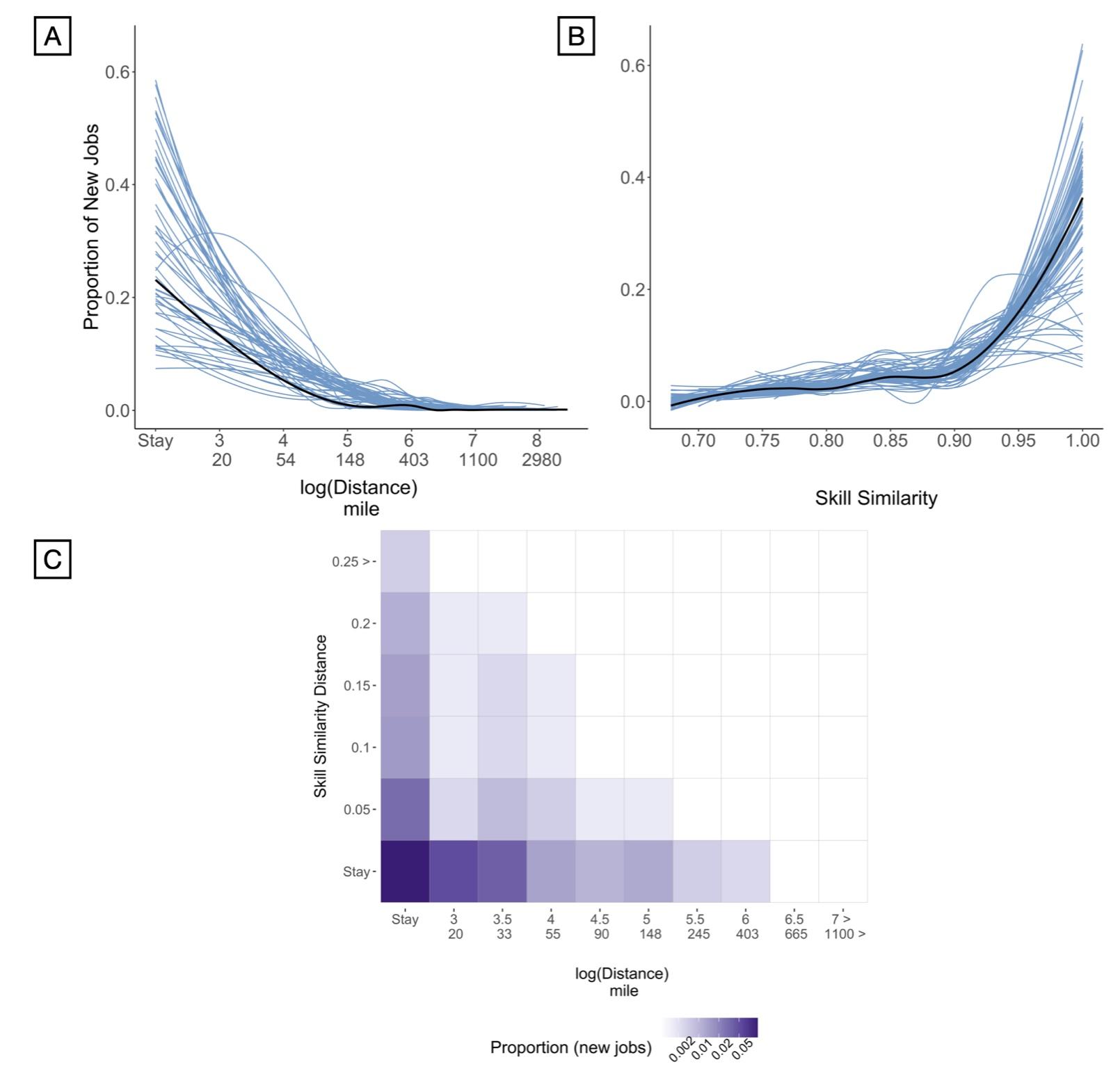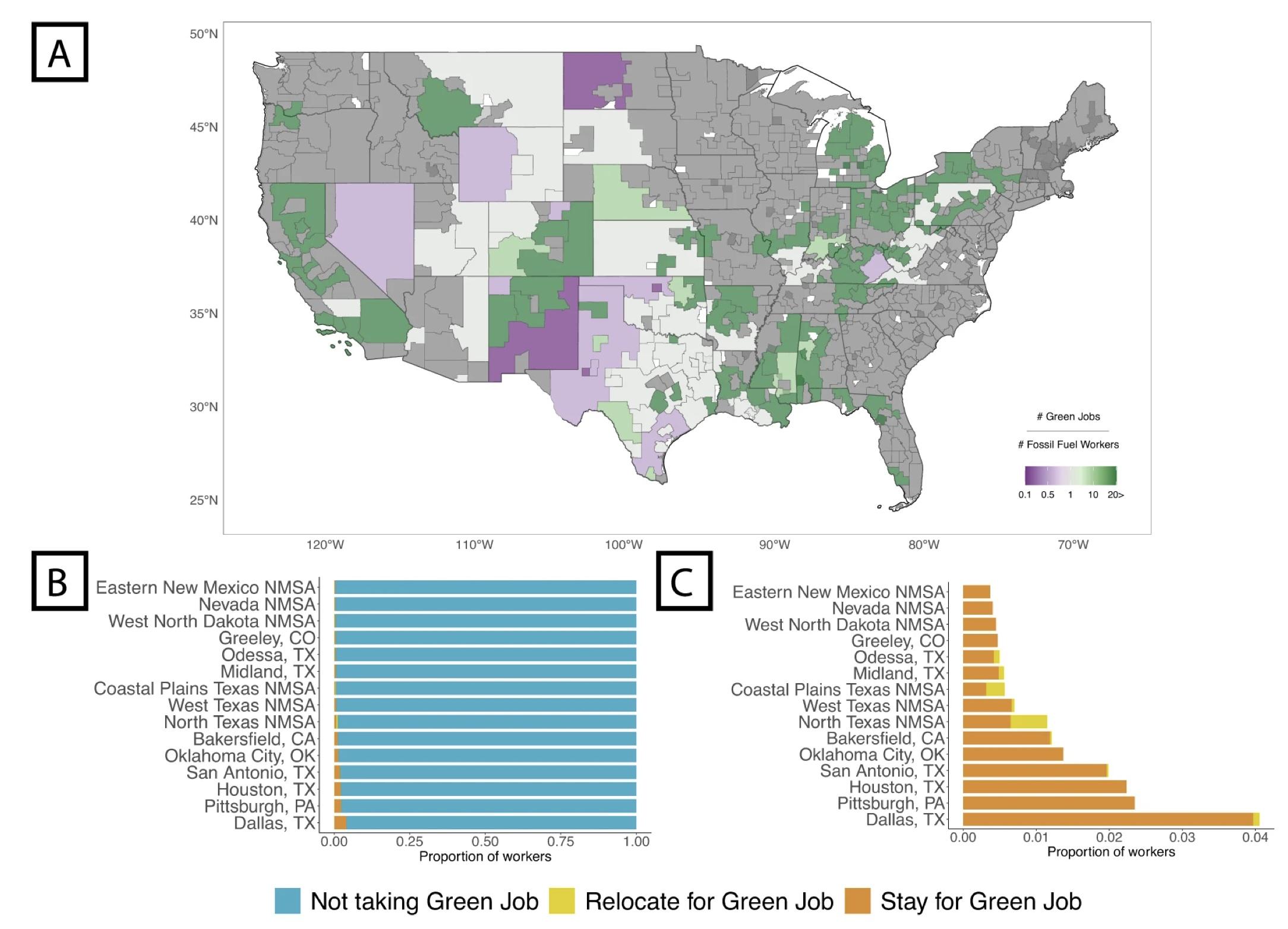In the absence of effective and cost-competitive carbon capture or removal technologies, a near complete phaseout of fossil fuels will be required to reach net-zero greenhouse gas emissions. This column evaluates two labour market frictions that could slow down the fossil-to-green transition in the US: skills and geography. The findings suggest that the fossil-to-green pipeline is feasible, but only if the green jobs materialise near areas where fossil fuel workers live.
Associate Professor of Economics Ecole polytechnique fédérale de Lausanne (EPFL)
There are a lot of good reasons to keep global warming below 2°C (IPCC 2018, 2023). To maintain reasonable odds of meeting this goal, the world must rapidly reach net-zero greenhouse gas emissions. And in the absence of effective and cost-competitive carbon capture or removal technologies, net zero means gross zero: a near complete phaseout of fossil fuels.
The problem with fossil fuel phaseouts is that millions of people around the world are currently paid to extract, sell, or make electricity out of fossil fuels. In the US, this concerns about 1.7 million workers (Tomer et al. 2021). In addition, a large workforce makes a living in fossil-dependent sectors, such as refineries, steel, or (for now) automobile. In India, about 21 million people work in such sectors (Bhushan and Banerjee 2021). One shouldn’t forget induced jobs created by fossil fuels: employment that is unrelated yet created by the presence of large fossil fuel employers. Think of restaurant staff in a coal town. In sum, phaseouts are a threat to many workers and their communities. Unsurprisingly, these regions tend to be hostile to climate action (Egli et al. 2022).
In response, governments around the world are deploying new policy tools to prop up new industries and jobs in at-risk regions. This includes so-called ‘just transition’ programmes such as the EU’s €55 billion Just Transition Mechanism. In the US, industrial policy is making a comeback and programmes such as the Inflation Reduction Act and the CHIPS Act are transforming the economic landscape in historical fossil fuel communities.
But is this the right strategy? Will these policies be effective? How should they be designed? And can they mitigate the concerns of those millions of workers whose job is at risk?
Frictions galore
To answer these questions, a natural starting point is to clarify why policy intervention is needed in the first place. When technological change is slow and steady, reallocation of labour across sectors can be gradual and done with limited pain (Pissarides 2000). But the clean energy transition is different. It requires the reallocation of millions of workers over a relatively short period of time. Indeed, the transition to net zero needs to happen soon (say, by 2050) to mitigate global warming. This creates bottlenecks and coordination failures: rapid disorderly phaseouts can lead to too many jobseekers for too few jobs. There are few comparable examples of similarly rapid and large-scale job transitions to guide us. The few that exist, such the Soviet Union’s transition to a market economy, remind us of the importance of paying close attention. And even managed phaseouts, where they existed, are painful processes (Oei et al. 2020).
Thus, policy intervention might be warranted to avoid ending up in unpleasant equilibria. This may entail creating new jobs for at-risk fossil fuel workers. One idea pushed forward by the Biden administration has been to facilitate workers’ transition from the fossil fuel sector to new green industries. Green jobs offer appealing features, such as their potential resilience to automation (Vona et al. 2018, Terzi 2022). Yet how realistic is such a ‘fossil-to-green’ job pipeline?
Measuring labour market frictions
That’s what we try to assess in a recent paper, co-authored with Junghyun Lim and Morgan Frank (Lim et al. 2023). We evaluate two labour market frictions that could slow down the fossil-to-green transition in the US: skills and geography. Moving is costly and jobs far away are harder to find (Schmutz and Sidibé 2019, Johnson and Schulhofer-Wohl 2019). Likewise, reskilling is expensive; jobseekers are less likely to switch to jobs with very different skill requirements (Wasmer 2006, Autor and Dorn 2013). Colloquially, a rugby player will find it easier to switch to American football than to dentistry.
Focusing on fossil fuel extraction workers – the most at-risk category of fossil fuel workers – we start by asking two questions. First, are the skills of fossil fuel workers similar enough to those needed in green industries? New sectors often require new skills, and the green industry is no exception (Vona et al. 2018). Second, are these fossil fuel workers located closely enough current and future green jobs?
To answer these questions, we combine data from O*NET (a database on the skills needed for a large number of occupations) with information from J2JOD (a database that measures the flow of workers across space and industries). We then model historical fossil fuel workers’ flows across space and industries to understand how sensitive they typically are to either type of frictions.
Our analysis generates two key insights (Figure 1):
- Fossil fuel extraction and green jobs require relatively similar skillsets. Some reskilling might be needed, but in general the two are a good match.
- Fossil fuel workers are more sensitive to distance than to skills differences. In other words: fossil fuel workers are more comfortable with switching occupation than in moving far for another fossil fuel job.
Figure 1 How far do workers go geographically (Panel A), skill-wise (Panel B), and both (Panel C) when switching jobs


Note: Each line in Panel A and B represents a regional labour market. The black line is the overall trend.
Source: Lim et al. (2023).
The implication of these two observations is that the fossil-to-green pipeline is feasible, but only if these green jobs materialise near areas where fossil fuel workers live.
Is that the case? We tackle this question in two ways. First, we use present-day solar and wind infrastructure to proxy for the existence of local green jobs. Second, we use BLS projections about aggregate green employment in 2029 and estimate random forest models to predict where green jobs will materialise. We benchmark our predictions against other predictions, such as the ones developed by Mayfield et al. (2023), to ensure the robustness of our findings.
Here, our findings are sobering (Figure 2): neither current renewable infrastructure nor anticipated employment opportunities are located close enough to fossil fuel workers. We anticipate that in the absence of new political intervention, only 2% of fossil fuel workers will take such jobs.
Figure 2 Expected ratio of green to fossil fuel jobs (Panel A), proportion of fossil fuel workers predicted to take green and non-green jobs, and whether they would move to a different labour market to take that green job (panels B and C)


Note: Selection of 15 local labour markets with strongest fossil fuel presence.
Source: Lim et al. (2023).
To push this analysis further, we examine what would happen if green job creation could be geographically targeted. We find that the share of fossil fuel workers who would take green jobs increases dramatically. In fact, our simulations show that, from the perspective of fossil fuel workers, it is better to create 5 million green jobs that are well targeted geographically than 10 million jobs across the entire country.
In sum: the fossil-to-green pipeline won’t be slowed down because of a mismatch in skills. The bigger danger comes from geography.
Public policy in a friction-rich world
Geography is not a fatality. People have migrated throughout history to find better opportunities. Yet we see that local communities on the losing side of the energy transition often decline but persevere, creating local poverty traps. Recent work suggests that such areas are particularly likely to turn toward extreme and populist political leaders (Colantone and Stanig 2019, Egli et al. 2022, Colantone et al. 2023). As such, unmanaged phaseouts could generate instability and lead to brutal reversals.
This is the backdrop for recent debates about the return of industrial policy and the desirability of ‘place-based’ programmes. Government support for specific industries or regions is back in fashion (Levchenko and Choi 2021, Moretti 2022, Juhász et al. 2023a, Juhász et al. 2023b). Biden’s Inflation Reduction Act, for instance, uses tax incentives to generate investments in historical fossil fuel communities (US Treasury 2023).
Our study confirms the rationale for place-based policies. Transition policies should consider fossil fuel workers as they are: skilled but not necessarily very mobile. If workers cannot go to jobs, then jobs must go to them. Each dollar of public or private investment will go further if it reaches communities that need it.
Yet thorny policy problems remain. First, there exists considerable scepticism regarding the logic of industrial policy itself. Such policies typically create price and trade distortions (Posen 2023). Even if industrial policy were to increase welfare in a vacuum, it would likely generate new lines of conflicts internationally. The US-China tensions over tariffs in the solar industry give a taste of what could be to come (Hughes and Meckling 2017, Aklin 2018).
Second, there is limited (though growing – see Juhász et al. 2023) evidence regarding how to make industrial policies effective, implementable, and popular. Maintaining democratic and local support, in particular, is critical. Recent field work conducted by Gazmararian and Tingley (2023) in US coal regions highlights the importance of getting buy-in from at-risk communities in the design and implementation of climate policy. Currently, we still know too little about the aspirations of these workers, especially outside industrialized countries (Blankenship et al. 2022). Such data will be essential to design sound policies. Otherwise, poorly orchestrated green technological transitions are at the risk of undermining themselves.



































































